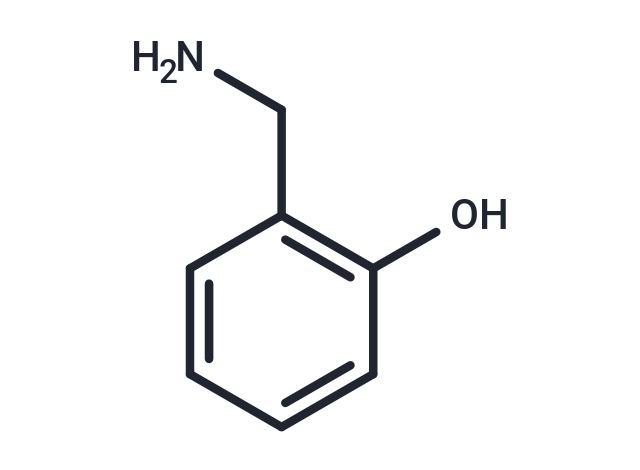Shopping Cart
- Remove All
 Your shopping cart is currently empty
Your shopping cart is currently empty

2-Hydroxybenzylamine, a potent small molecule scavenger of IsoLGs, sequesters the reactive species as inert adducts. 2-Hydroxybenzylamine may be used to decrease early recurrence of atrial fibrillation and other atrial arrhythmias following atrial fibrillation ablation by decreasing IsoLG adducts with native biomolecules.

| Pack Size | Price | Availability | Quantity |
|---|---|---|---|
| 500 mg | $34 | In Stock | |
| 1 g | $55 | In Stock | |
| 1 mL x 10 mM (in DMSO) | $29 | In Stock |
| Description | 2-Hydroxybenzylamine, a potent small molecule scavenger of IsoLGs, sequesters the reactive species as inert adducts. 2-Hydroxybenzylamine may be used to decrease early recurrence of atrial fibrillation and other atrial arrhythmias following atrial fibrillation ablation by decreasing IsoLG adducts with native biomolecules. |
| In vivo | Compared to hypercholesterolemic Ldlr-/- mice treated with vehicle or 4-Hydroxybenzylamine, a nonreactive analogue, 2-Hydroxybenzylamine decreases atherosclerosis by 60% in en face aortas, without changing plasma cholesterol. Ldlr-/- mice treated with 2-Hydroxybenzylamine have reduced MDA-LDL and MDA-HDL levels, and their HDL display increased capacity to reduce macrophage cholesterol. Importantly, 2-Hydroxybenzylamine reduces the MDA- and IsoLG-lysyl content in atherosclerotic aortas versus 4-Hydroxybenzylamine. Furthermore, 2-Hydroxybenzylamine reduces inflammation and plaque apoptotic cells and promotes efferocytosis and features of stable plaques. Dicarbonyl scavenging with 2-Hydroxybenzylamine has multiple atheroprotective effects in a murine FH model[2]. |
| Molecular Weight | 123.15 |
| Formula | C7H9NO |
| Cas No. | 932-30-9 |
| Smiles | NCC1=C(O)C=CC=C1 |
| Relative Density. | 1.141 g/cm3 (Predicted) |
| Storage | Powder: -20°C for 3 years | In solvent: -80°C for 1 year | Shipping with blue ice. | |||||||||||||||||||||||||||||||||||
| Solubility Information | DMSO: 45 mg/mL (365.39 mM) | |||||||||||||||||||||||||||||||||||
Solution Preparation Table | ||||||||||||||||||||||||||||||||||||
DMSO
| ||||||||||||||||||||||||||||||||||||

Copyright © 2015-2024 TargetMol Chemicals Inc. All Rights Reserved.